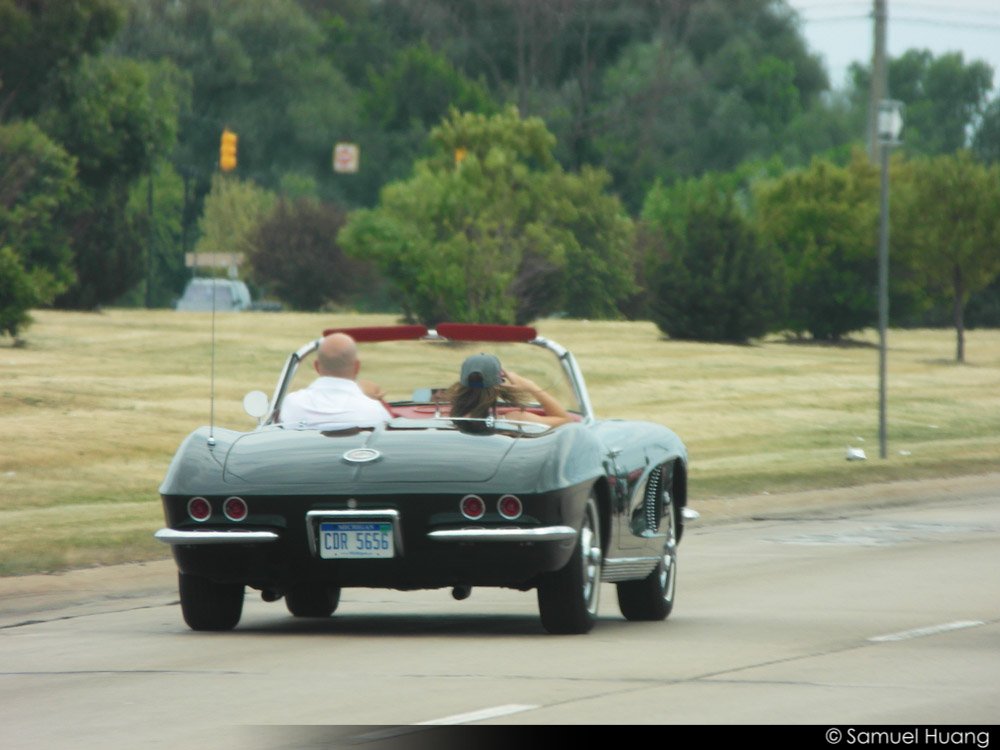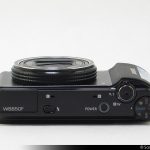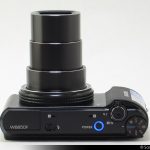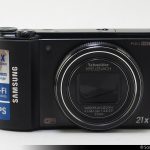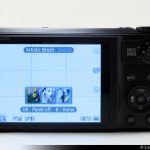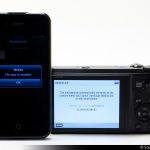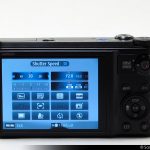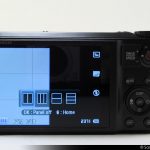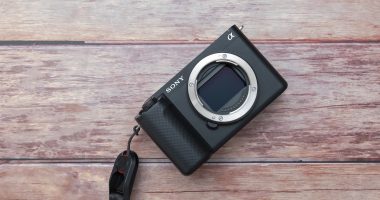The Samsung WB850F is a new long zoom camera that Samsung has dubbed a Smart Camera. At a glance, this camera looks like a real powerhouse with a 16.2 megapixel sensor, 21x optical zoom, Wi-Fi connectivity, and GPS. It can also record video in full HD. What’s amazing is that all of this is crammed into a compact package that is only a bit larger than your average point-and-shoot compact camera. The question is, can the WB850F’s excellent features produce photos that are just as amazing as its specs?
The last camera I looked at that was similar to the WB850F was the FujiFilm FinePix F770EXR. The dimensions of both cameras are quite similar with very similar features and specs. The main difference here is that the WB850F has both Wi-Fi network capabilities and GPS. Both are very good cameras, but the Samsung WB850F edges out the F770EXR in both features build quality. If you read the review on the F770EXR, you’ll know that I was pretty impressed with that camera and so was my wife which borrowed it from me quite a number of times. Out of all the compact cameras I’ve used, it was her favorite, until now that is. The Samsung WB850F just took at honor.
Body & Design
 If you haven’t already, please read my initial hands-on preview here. I go over my impressions of the body and design as well as my feelings on button placement and ergonomics. Like before, since those were my initial hands-on impressions, they may differ a bit after I’ve had more time using the camera, which sometimes is the case since everything may not be what it seems at first.
If you haven’t already, please read my initial hands-on preview here. I go over my impressions of the body and design as well as my feelings on button placement and ergonomics. Like before, since those were my initial hands-on impressions, they may differ a bit after I’ve had more time using the camera, which sometimes is the case since everything may not be what it seems at first.
With the Samsung WB850F however, I was pleasantly surprised that the camera lived up to most of my initial impressions. For the 2 weeks that I’ve had it, it’s been a solid, strong camera that never felt like it was ever going to break on me. There is very little give with the camera when you flex it which again gives it a feeling of quality and durability. Even parts that normally feel really flimsy on other cameras like the popup flash mechanism feel really strong here, or at least stronger than other cameras I’ve seen.
One of the things about the FujiFilm F770EXR that felt a bit flimsy was the lens mechanism where when it was fully extended, if you were to hold it and wiggle it around a bit, it felt really wobbly and weak. With the Samsung, this is not the case. The lens mechanism does have a tiny bit of give but feels a lot more stable than the F770EXR. Fit and finish seems much better here. The lens also extends and retracts quite smoothly and quietly.
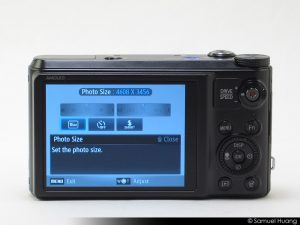 Now, I didn’t notice this with my initial hands-on, but the rear viewscreen is actually a tiny bit recessed and doesn’t sit completely flush with the rear. This is a very thoughtful design on he part of Samsung as it keeps the glass from touching surface when the camera is laid flat on it’s back. I would however probably still suggest some kind of clear screen protector to keep scratches off that gorgeous 3.0″ AMOLED display even though the rear glass seems very durable and I haven’t had any problems with scratches since I’ve had it.
Now, I didn’t notice this with my initial hands-on, but the rear viewscreen is actually a tiny bit recessed and doesn’t sit completely flush with the rear. This is a very thoughtful design on he part of Samsung as it keeps the glass from touching surface when the camera is laid flat on it’s back. I would however probably still suggest some kind of clear screen protector to keep scratches off that gorgeous 3.0″ AMOLED display even though the rear glass seems very durable and I haven’t had any problems with scratches since I’ve had it.
The only real issue I had with the WB850F is that depending on how I hold the camera, the palm of my hand would sometimes accidentally push down on the “delete” button on the bottom right corner of the camera. That button only functions in certain modes, but it still is a bit annoying if you’re trying to frame a shot and then accidentally tap the button with your palm where it’ll usually through you back into the home menu of the mode your in. It doesn’t happen often, but it does happen.
Other than that 1 issue, I was very satisfied with the overall build and quality of the Samsung WB850F and felt very comfortable and natural using it. I never had to really fumble through awkward button placements or do finger gymnastics to reach any crucial options. I do however wish that the faux function ring around the lens actually worked and did something.
Operations & Features
 I really like the approach Samsung took with the menu system in the WB850F. For starters, the camera has a physical mode select dial on the top of the camera which makes selecting different shooting modes fast and simple. I also like the fact that Samsung also made it so that you do not need to look at the icons on the top of the dial to know which mode you’re in. As you turn the dial, the selection also appears on the rear viewscreen along with any accompanying options that go with that mode. For instance, if you place the camera in ASM mode, 3 selection icons will also appear on the viewscreen for A, S, or M modes that you would select with the directional buttons. If you select SCN mode for instance, all the different preloaded scene modes come up that you can also select with the directional buttons. It’s all very simple and plainly laid out for you that never even had to thumb through the instruction manual to use the WB850F.
I really like the approach Samsung took with the menu system in the WB850F. For starters, the camera has a physical mode select dial on the top of the camera which makes selecting different shooting modes fast and simple. I also like the fact that Samsung also made it so that you do not need to look at the icons on the top of the dial to know which mode you’re in. As you turn the dial, the selection also appears on the rear viewscreen along with any accompanying options that go with that mode. For instance, if you place the camera in ASM mode, 3 selection icons will also appear on the viewscreen for A, S, or M modes that you would select with the directional buttons. If you select SCN mode for instance, all the different preloaded scene modes come up that you can also select with the directional buttons. It’s all very simple and plainly laid out for you that never even had to thumb through the instruction manual to use the WB850F.
 Like with most cameras lately, there is a SMART mode on the Samsung which basically allows you to just shoot photos with very little thought. Most people may just leave it on SMART mode which is all fine and good, but for me, I like a bit more control, even with point-and-shoots. With that said, control freaks will be happy to know that the WB850F allows for full manual control. By placing the camera in ASM mode and then selecting manual, you can control both shutter speed and aperture, as well as ISO. What I have never seen before on a point-and-shoot camera is the ability to manually focus the lens and what a surprise it was to find out that you can do it with the WB850F! Thought it’s not the most intuitive way to manually focus, I like the fact that the option is there for those who want that kind of control. Basically you set the camera to manual focus within the Fn menu system and then use the dial around the 4-way control pad to manually focus the lens. Again, not the most elegant way of manually focusing, but it’s there.
Like with most cameras lately, there is a SMART mode on the Samsung which basically allows you to just shoot photos with very little thought. Most people may just leave it on SMART mode which is all fine and good, but for me, I like a bit more control, even with point-and-shoots. With that said, control freaks will be happy to know that the WB850F allows for full manual control. By placing the camera in ASM mode and then selecting manual, you can control both shutter speed and aperture, as well as ISO. What I have never seen before on a point-and-shoot camera is the ability to manually focus the lens and what a surprise it was to find out that you can do it with the WB850F! Thought it’s not the most intuitive way to manually focus, I like the fact that the option is there for those who want that kind of control. Basically you set the camera to manual focus within the Fn menu system and then use the dial around the 4-way control pad to manually focus the lens. Again, not the most elegant way of manually focusing, but it’s there.
Now if all that sounds a bit complicated, but you still want to have some control, you can manually select scene types by going into SCN mode. There are 8 basic scene modes to choose from, most are pretty standard types like sunset, night time shooting, and portrait mode. I’ve seen more scene modes with other cameras however and these 8 are as basic as they get. I’ve never really found the preselected scene modes that useful and in my case, I never use them at all. I like to stick with using the P, A,S, & M modes and will occasionally use Auto selection modes when I’m feeling lazy.
The WB850F though does come with a few really cool artistic type features that I’ll list below.
- Panoramic mode on the WB850F is rather good and all you need to do is pan and sweep the camera over the area you want to shoot as a panoramic. It records the data and then stitches it all together. It’s very similar to what Sony does with their cameras.
- 3D photo mode – which I don’t really care for and all it lets you do is capture 3D photos so you can view them on a compatible TV.
- Magic frame – allows you to take photos with a variety of different framing effects. Split Shot mode allows you to take several photos and arrange them into several preset layouts. This is similar to apps like PicStitch that you see in the iOS App Store.
- Picture in Picture mode – allows you take a photo of a background and then overlay a video of photo on top of it.
- Artistic Brush mode – this mode has 3 different sub modes within it. You can make your photos look like ink paintings, cartoons, or pencil sketches. This mode is actually kind of neat and I’m sure a lot of people will make use of this mode.
- HDR mode – this mode seems pretty standard now with most cameras as I’m seeing more and more cameras including this as an in-camera option.
- Creative Movie Maker mode – allows you to edit and create a movie with a storyline. I honestly am not too sure how this mode works as recording video with photo cameras is not really that big of an interest to me. Yes I do sometimes take video with my cameras, but I’m not really that big on editing videos.
I didn’t really get to use the GPS features like I wanted to because it requires a map download through the desktop software which I just didn’t have time to do before I left on my trip. That means as much as I wanted to try out the mapping features, I just couldn’t.
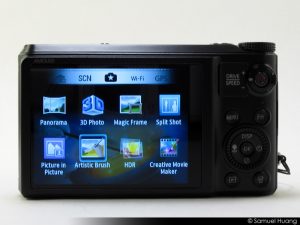 Overall, the Samsung WB850F is a very capable camera with tons of features that will appeal to both the beginner and the more advanced. Honestly I was really surprised by everything you could do with this camera because I never really considered Samsung that big of an option when looking at cameras. This is one of the most full featured point-and-shoots I’ve come across and the only thing it’s really missing is the ability to shoot RAW. This only matters though to hardcore photographers and most casual shooters won’t even notice it’s not there. I really like the fact that even those who aren’t comfortable with technology can use this camera easily.
Overall, the Samsung WB850F is a very capable camera with tons of features that will appeal to both the beginner and the more advanced. Honestly I was really surprised by everything you could do with this camera because I never really considered Samsung that big of an option when looking at cameras. This is one of the most full featured point-and-shoots I’ve come across and the only thing it’s really missing is the ability to shoot RAW. This only matters though to hardcore photographers and most casual shooters won’t even notice it’s not there. I really like the fact that even those who aren’t comfortable with technology can use this camera easily.
Wi-Fi Image Sharing
 Now, this isn’t the first camera I’ve looked at that has built in Wi-Fi, the FujiFilm XP170 takes that honor. However, the Wi-Fi capabilities in the WB850F blow away everything that the XP170 did. In fact, on the XP170, it was rather basic what you could do in camera with it. You could only transfer images to compatible smart devices as long as you could download and use its corresponding app. On the WB850F, it goes way beyond that and really shows why Samsung labeled this a Smart Camera.
Now, this isn’t the first camera I’ve looked at that has built in Wi-Fi, the FujiFilm XP170 takes that honor. However, the Wi-Fi capabilities in the WB850F blow away everything that the XP170 did. In fact, on the XP170, it was rather basic what you could do in camera with it. You could only transfer images to compatible smart devices as long as you could download and use its corresponding app. On the WB850F, it goes way beyond that and really shows why Samsung labeled this a Smart Camera.
For starters, it can do exactly what the FujiFilm XP170 did by downloading the available Samsung MobileLink app from the App Store (I’m using this on an iPhone). To use it, first activate MobileLink on the camera itself. It will turn the WB850F into a Wi-Fi access point. On your iPhone, go into settings > Wi-Fi and then connect to the Wi-Fi network created by the camera. Close settings and then start the Samsung MobileLink app on your device. The app will automatically link to the camera and display all images you set to share from the camera. You can either set it to all images or select images. This way, if you’re sharing photos with someone else, they won’t be able to see all the images on the camera if you only select a couple to share. Once you confirm which images you want to transfer to your device, just tap the transfer button and let it do its magic. Very simple process, just like on the XP170. Images will then show up in your Camera Roll album.
 Now, where the WB850 goes above and beyond with their Wi-Fi capabilities is its ability to share directly to several online social networks, the popular one being Facebook. You can also upload photos to Picasa, Photo Bucket, or videos to YouTube. In order to do this, you’ll need to connect the WB850F to your wireless network which is a simple process. Just find your network and connect. It can even connect to password protected networks if you have the pass. Once connected, it’ll remember the network for future use.
Now, where the WB850 goes above and beyond with their Wi-Fi capabilities is its ability to share directly to several online social networks, the popular one being Facebook. You can also upload photos to Picasa, Photo Bucket, or videos to YouTube. In order to do this, you’ll need to connect the WB850F to your wireless network which is a simple process. Just find your network and connect. It can even connect to password protected networks if you have the pass. Once connected, it’ll remember the network for future use.
You also are not limited to social networks. The WB850F also gives you the option to upload it to Microsoft’s Skydrive, email photos to friends, or beam them to a compatible TV for viewing.
I really didn’t use any of these extra Wi-Fi features but I’m glad that Samsung included them as part of the feature set. I’d like to see an update in the future that allows for more options such as support for Flickr as well as Twitter and maybe even Dropbox support. In the mean time, the features included should satisfy most people one way or another.
Image Quality
Here’s the one area that is really most important to me when it comes to looking at cameras. Sure I want a camera that can do all the neat stuff like image filters, manual controls, Wi-Fi connectivity and a good zoom, but in the end, all of those things don’t matter if the image quality doesn’t deliver. Image quality is really the most important area I look for when looking for a camera so if it doesn’t deliver, it gets crossed off my list. Luckily, the WB850 isn’t one of those cameras. The image samples below have not been post processed, they’ve only been resized for web use.
Image quality from the WB850 is excellent. In most cases, the images were very sharp and full of detail with almost no noise at all. I had a chance to use it both indoors and outdoors and in both situations, image quality was excellent. Obviously shooting photos indoors yielded a tiny bit of noise, but that’s to be expected.
The WB850F also did a great job rendering rich colors that never looked blotchy or muddy looking.
What I really found impressive was the long-zoom capability and how well the in-camera image stabilization worked. The image above was taken at full zoom, or a moving vehicle from inside another moving vehicle. In instances like this, the image would have been a blurry mess, but the WB850F had no trouble capturing it.
Overall, you can see that the images are very good for a point and shoot. They are very comparable to the similar FujiFilm F770EXR but edges it out a bit which is no easy task considering how much more experience FujiFilm has in this game. You can check out more samples here in my samples gallery post.
Final Thoughts
 The Samsung WB850F blew away most of my expectations. I’ve mentioned it in my hands-on preview, but I would never have even considered purchasing a Samsung camera until now. Again, it’s not really an option that comes to mind as most people will automatically think Nikon or Canon when shopping for a camera and thinking that way would be a huge mistake and very limiting of your options. Yes both those companies make excellent cameras but I think companies like Sony and Samsung are making huge gains when it comes to image quality and feature set.
The Samsung WB850F blew away most of my expectations. I’ve mentioned it in my hands-on preview, but I would never have even considered purchasing a Samsung camera until now. Again, it’s not really an option that comes to mind as most people will automatically think Nikon or Canon when shopping for a camera and thinking that way would be a huge mistake and very limiting of your options. Yes both those companies make excellent cameras but I think companies like Sony and Samsung are making huge gains when it comes to image quality and feature set.
What I’m most impressed with here is the the image quality and ease of use. Yes all the extra features and the ability to transfer images over Wi-Fi and the included GPS are great features to have, but in the end, what I’m looking for is a camera that takes good photos with a high amount of detail and because my wife likes to use some of my cameras, something simple to use where she doesn’t have to ask me a million questions in order to use it.
I let my wife use this camera for for part of the time I had it and she absolutely fell in love with it because of how easy it was to use, the long-zoom capabilities, and the plain fact that all the photos she took looked great. She really likes these cameras with the long zoom because she isn’t really the type that likes to get super close to her subjects in order to get the shot. She takes a lot of pictures of the kids and most of the time, they are running around on the playground or on the field playing a sport so she’s usually on the sidelines. This lets her get in close to the action without having to actually be close. She also really loved being able to upload directly to Facebook from the camera without first having to transfer them to a computer and then upload them to Facebook. This came in handy when we were on vacation and I didn’t bring my laptop with me. She was able to directly upload them to Facebook.
Overall, the the Samsung WB850F is a camera I would definitely go out and buy on my own. It has every feature I’d want in a camera and more. The only complaint I have about it is the lack of RAW shooting, but it’s not something that would keep me from buying this, especially since I wouldn’t be the primary user of the camera, my wife would be.
Shop Links
Samsung WB850F – Samsung WB850F 16 MP Smart Long Zoom Digital Camera




